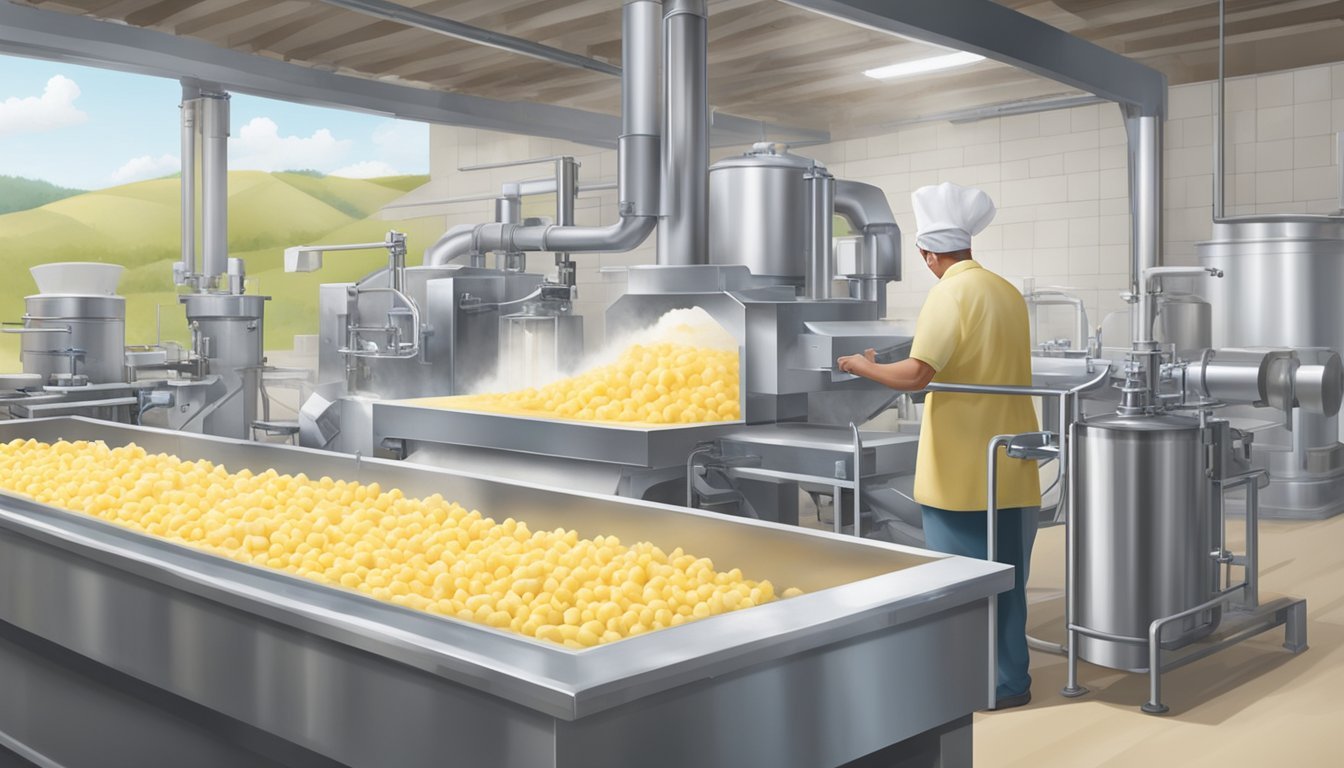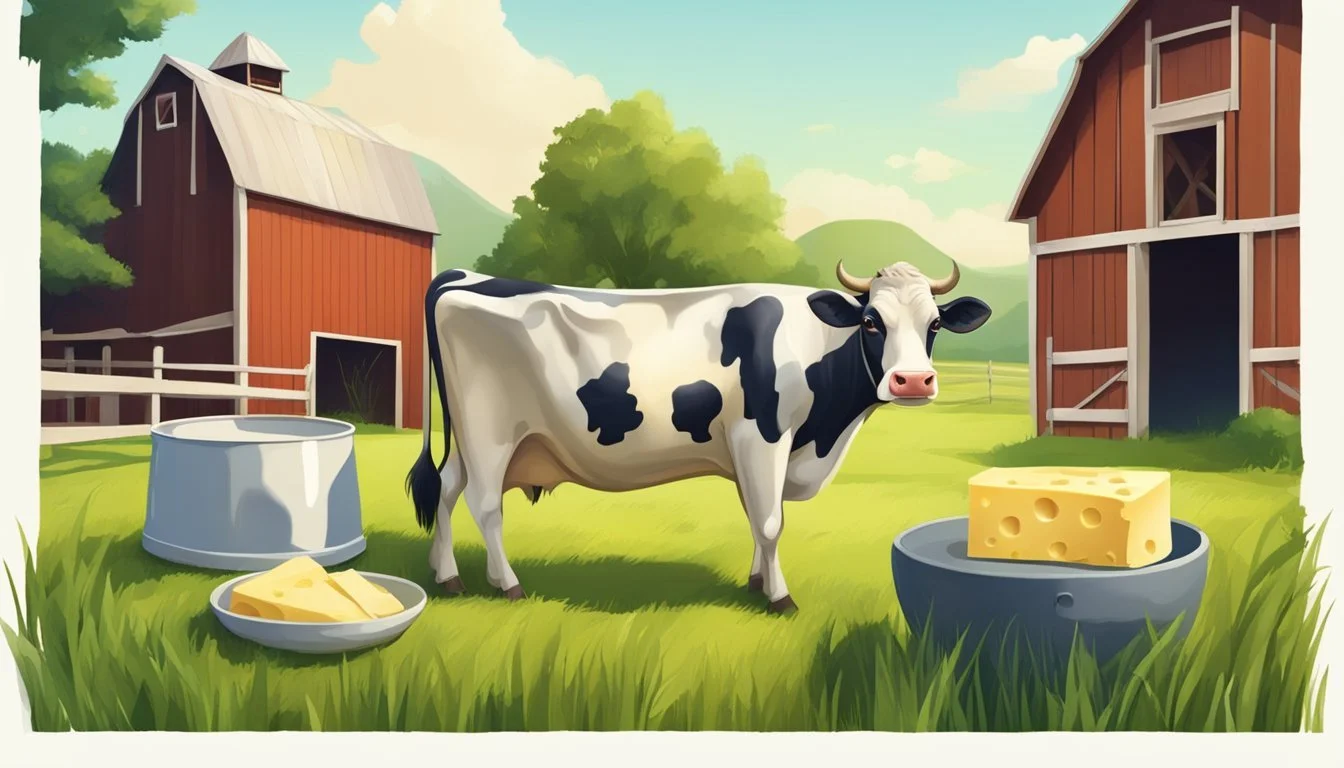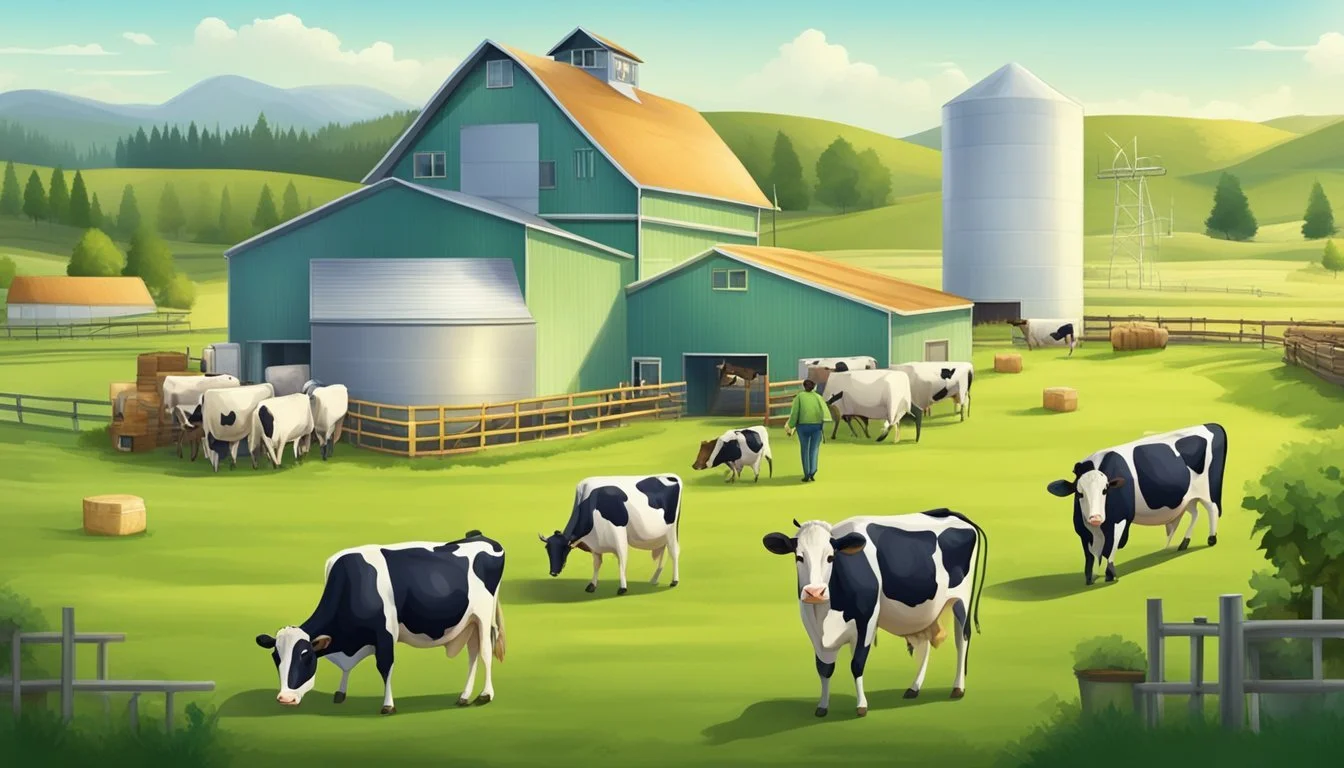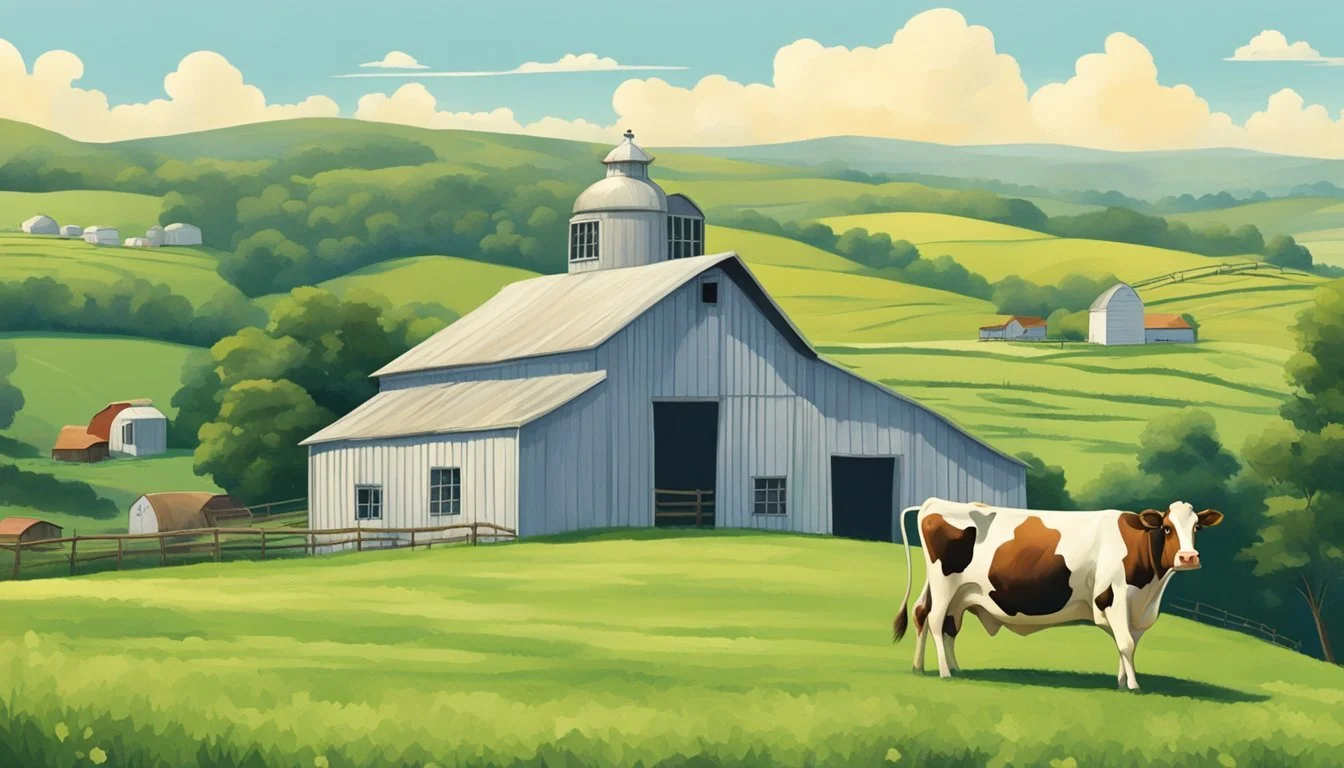How do I make cheese, butter, and other dairy products at home
A Beginner's Guide
Making cheese (What wine goes well with cheese?), butter, and other dairy products at home is a rewarding venture that marries the arts of patience and craftsmanship with the science of fermentation and preservation. It allows individuals to take control of the ingredients and processes involved, ensuring a product that can be tailored for taste, texture, and nutritional content. By transforming milk and cream into a variety of dairy products, one can discover the rich and diverse flavors that homemade methods can yield.
The process of creating dairy products such as cheese and butter involves curdling milk, separating the solids from the whey, and, in some cases, aging the product to develop flavor. Cheese making can range from producing fresh, soft cheeses (What wine goes well with soft cheeses?), which require minimal equipment and ingredients, to more complex aged varieties that might necessitate specific cultures and aging environments. Butter making is often a simpler process, where cream is churned until it splits into butter and buttermilk.
Furthermore, the satisfaction derived from making dairy products at home extends beyond just the delicious outcomes; it also encompasses the deeper understanding and appreciation for the food one consumes. Aspiring home dairy artisans can customize their creations by incorporating herbs, spices, or fruits for unique twists on classic flavors. Whether one is interested in the traditional techniques or contemporary adaptations, there is ample opportunity to explore and enjoy the world of homemade dairy.
Understanding Dairy Products
In the journey from farm to table, dairy products begin with the milking of cows, goats, or other mammals. This section explores the transformation of milk into a variety of dairy products and their nutritional impact.
Milk and Its Derivatives
Milk, a rich source of nutrients, serves as the foundational ingredient in many dairy products. Whole milk contains approximately 3.5% milk fat and is a comprehensive source of nutrients, including protein, fat, and carbohydrates. Processes like pasteurization ensure milk's safety for consumption by eliminating harmful bacteria. Variants of milk, such as goat milk and milk from buffaloes, offer different flavor profiles and nutritional values, typically having a higher fat content.
Derived from milk, cream is categorized by its fat content, with heavy cream on the higher end, known for its richness. The separation of milk into cream and skim milk is facilitated by the milk's fat, which is less dense than its water content. A variant of cream, butter, is made by churning cream, leading to the formation of butterfat, buttermilk, and eventually, butter.
Cheese: The process of cheese-making involves the coagulation of the milk protein casein. It ranges from soft to hard textures and develops diverse flavors based on the milk used and the aging process.
Yogurt: Fermentation of milk by bacteria produces yogurt, characterized by its creamy texture and tangy taste.
Buttermilk: Originally the liquid left after making butter, now often cultured to achieve a tangy flavor and thicker texture.
Health Aspects of Dairy
Dairy products are a significant source of vitamins and minerals, including calcium, potassium, and vitamin D. They provide essential proteins for body repair and maintenance. The fats found in dairy can vary, with saturated fat more common in full-fat products. Some research suggests that certain fats in dairy, such as conjugated linoleic acid (CLA), may offer health benefits.
For individuals who are lactose intolerant, the lactose in milk can cause digestive distress; however, certain dairy products like hard cheeses and yogurt may be more tolerable due to their lower lactose content. The healthiness of dairy can be a subject of debate, as it is tied to its fat and calorie content; moderation and attention to fat intake are important. Yet, for many, dairy remains a part of a healthy diet, offering nutritional benefits when consumed in balance with other foods.
Fundamentals of Dairy Production
In dairy production, the transformation from raw milk to cheese, butter, and other products hinges on controlled fermentation and precise application of heat, which are pivotal in developing desired flavors and textures.
Principles of Fermentation
Fermentation is the biochemical process where lactic acid bacteria convert sugars into lactic acid, playing a crucial role in dairy production. These bacteria initiate the fermentation process in products like cheese and yogurt, where they ferment lactose, the sugar present in milk. This not only imparts a distinct tangy flavor but also lowers the pH, aiding in the coagulation of milk proteins to form a curd. The choice of bacteria strains, whether it be lactic acid bacteria or sometimes yeast, influences the final product's taste, smell, and texture.
The Role of Heat
Heat is a fundamental element in dairy processing, used judiciously to cook the curd, which affects both the moisture content and the texture of the cheese. In cheesemaking, after curd formation, the curd is heated to a specific temperature and held there for a period. This careful cooking helps in expelling whey, firming the curd, and determining the final cheese's characteristic. In buttermaking, cream is pasteurized to eliminate undesirable microbes and to ensure the proliferation of the right bacteria essential for the development of flavor.
Cheesemaking Essentials
Cheesemaking is an art that transforms simple ingredients like milk into a wide variety of textures and flavors. To embark on this craft, one must understand the different types of cheese, the cheesemaking process, and the necessary ingredients and additives.
Types of Cheese
There are multiple varieties of cheese, each with unique characteristics and preparation methods. Soft cheeses, such as mozzarella and burrata, are typically eaten fresh and have a high moisture content. On the other hand, hard cheeses like cheddar undergo a longer aging process, resulting in a firmer texture and more intense flavor. Fresh cheeses (What wine goes well with fresh cheeses?) include paneer and ricotta, which do not require aging and are known for their mild taste. For those seeking distinctive flavors, artisan cheeses offer a wide range of taste profiles influenced by the addition of herbs, fruit, and specific techniques used during their production.
The Cheesemaking Process
The process of cheesemaking generally involves the coagulation of milk proteins to form curds and whey. The initial step is the curdling of milk, typically achieved with the introduction of rennet or acid such as citric acid. Starter cultures may also be added to enhance flavor and assist in curd formation. Once curdled, the solid curds are separated from the liquid whey—this separation can be facilitated with a cheesecloth or a strainer. The curds are then pressed and aged if required, depending on the type of cheese being made.
Ingredients and Additions
In cheesemaking, the primary ingredient is milk, which can be from cows, goats, sheep, or other mammals. Key additions include:
Rennet: An enzyme that aids in curdling.
Starter cultures: Bacteria that introduce flavor and help develop cheese texture.
Salt: Used for flavor and as a preserving agent.
Herbs and fruit: Optional ingredients for creating flavored cheeses.
The cheesemaking kit might include a thermometer, cheesecloth, and molds for shaping and pressing cheeses. Proper usage of these ingredients and tools ensures the successful creation of a wide variety of cheeses, from a simple farmer's cheese to an elaborate aged cheddar.
Beyond Cheese: Expanding Dairy Horizons
When one ventures beyond cheese making, a world of dairy delights unfolds, from the cultured tang of yogurt and kefir to the creaminess of various butters and the rich diversity of fermented dairy products.
Cultivating Yogurt and Kefir
Yogurt begins with heating milk and introducing specific bacterial cultures. A yogurt maker provides an ideal, consistent temperature, encouraging the bacteria to ferment the milk into thick, nutritious yogurt. Kefir, on the other hand, requires kefir grains, a symbiotic culture of bacteria and yeast, to ferment the milk. This results in a drink that's slightly effervescent, with higher probiotic content than yogurt.
Creating Various Butters
To create butter, one must start with heavy cream, allowing it to separate into butterfat and buttermilk through the process of churning. Homemade butter ensures freshness and the ability to infuse flavors, ranging from herbs to spices. After separating the butter muslin, the remaining liquid, known as buttermilk, can be used in baking or consumed as a fermented dairy drink.
Exploring Sour Cream and More
Sour cream is crafted by combining cream with lactic acid bacteria, leading to a thick and tangy product ideal for dips and toppings. Cream cheese involves a similar process but starts with milk and cream, resulting in a spreadable cheese perfect for bagels and desserts. Other fermented dairy products like clabbered milk, made by naturally souring raw milk, expand the horizons of homemade dairy creations, each offering unique flavors and textures to the discerning palate.
Specialized Dairy Variations
In the realm of dairy production, both traditional and modern approaches have given rise to a variety of products tailored to diverse dietary needs and gastronomic preferences. This section explores the breadth of dairy adaptations available, including lactose-free options and handcrafted artisan products that contribute to culinary diversity and community enterprises.
Dairy Alternatives and Substitutes
For those who are lactose intolerant or looking for health benefits associated with plant-based diets, dairy alternatives provide a range of substitutes mimicking traditional dairy products. Rice milk, for example, is known for its sweeter taste and is a suitable substitute in cereals. Soy, almond, and cashew yogurts offer variations in calorie count, protein content, and carbohydrate levels to cater to different nutritional needs. Fortified versions of these alternatives often include calcium and other vitamins, ensuring consumers do not lack essential nutrients despite avoiding animal milk products.
Artisan Dairy Products
The artisan approach to dairy production emphasizes quality, craftsmanship, and regional flavors, bringing forth a spectrum of specialty products such as artisan cheeses. Artisans typically operate as small-scale businesses, connecting with the community through farmers markets and local food events. Goat cheese is a prime example of an artisan dairy product that can range from soft and spreadable to dry and crumbly based on the techniques used. Home cheesemaking allows individuals to engage with this artisanal craft, creating cheese right from their kitchens. This not only fosters a deeper understanding of the cheesemaking process but also inspires innovation within the dairy landscape.
Practical Dairy Preparation Techniques
Making dairy products at home, such as cheese and butter, can be a rewarding endeavor with the right techniques and tools. These methods allow for greater control over the ingredients and can offer a fresher alternative to store-bought options.
Homemade vs. Store-Bought Methods
Homemade dairy preparation typically provides fresher flavors and the satisfaction of creating food from scratch. Unlike store-bought products, which often contain preservatives and additives, homemade cheese, butter, and yogurts are crafted with good milk from a grocery store or local source, without unnecessary ingredients. The process may take longer than simply purchasing them, but the end products are unique and customizable. For example, when making cheese, one controls the firmness and tanginess by adjusting the acidity and setting time.
Tools of the Trade
For successful dairy projects, a variety of simple yet specific tools are needed. A ladle is essential for gently transferring curds when making cheese, while a colander or cheesecloth is indispensable for straining. Mixing ingredients, such as cream for butter, requires a whisk or electric mixer for consistency. A slow cooker can be very convenient for managing the precise temperatures necessary for culturing certain dairy products like yogurts and soft cheeses. Using these tools effectively can create products that rival those found in a grocery store and provide a deeper appreciation for the dairy-making process.
One should remember, especially for cheesemaking, to ensure all tools are sterilized beforehand to maintain the purity and safety of the finished product. Whether using store-bought milk or milk from a local farmer, the quality of the milk plays a crucial role in the outcome of the dairy products. The better the milk quality, the better the flavor and texture of the dairy creations will be.
Safe Dairy Practices and Preservation
When making cheese, butter, and other dairy products, it is essential to employ safe handling practices and preservation methods to prevent the growth of harmful bacteria and ensure a product that is safe to consume.
Preventing and Controlling Contamination
Thorough cleanliness is the cornerstone of preventing contamination in dairy products. Surfaces that come into contact with milk and dairy should be sanitized to remove bacteria that can cause spoilage or illnesses, such as Listeria and Salmonella. Health professionals emphasize the importance of pasteurization, a process that kills bacteria without altering the nutritional quality of the dairy. Care must also be taken to avoid cross-contamination with raw foods or unclean equipment.
Storage and Shelf Life
Storage conditions directly affect the shelf life and safety of dairy products. Dairy should be stored at appropriate temperatures to inhibit bacteria from thriving. Refrigeration at or below 40°F (4°C) is crucial for most products, as it slows bacterial growth. For butter and hard cheeses, proper storage can also include wrapping them in fresh waxed or parchment paper before refrigeration to preserve quality. Some hard cheeses can have a long shelf life when stored correctly, but soft cheeses should be consumed more quickly due to higher moisture content that can foster bacterial growth. Preservatives may be added to some products to further inhibit spoilage, though many artisanal cheeses rely on salt and natural fermentation instead.
Maintaining strict standards for handling and storing dairy helps ensure that the products not only meet food safety guidelines but also maintain their desired quality and taste.
Enhancing Flavors and Textures
When making cheese, butter, and other dairy products, achieving the perfect balance of flavors and textures is critical. Cheese makers often add lemon juice or vinegar during the curdling process, which not only assists in separating the curds from the whey but also contributes to the final flavor profile. These acidic components can brighten the taste and enhance the cheese's natural tanginess.
In the realm of butter, flavor and texture are also paramount. For instance, compound butters that incorporate simple ingredients can significantly elevate a dish. Butters enhanced with herbs, spices, or even sweet elements like honey offer both versatility and depth to an array of recipes, from a simple spread to a complex sauce.
Salt: Use in Dairy Products - Cheesemaking, Butter; Effect - Enhances flavor, acts as a preservative
Lemon Juice: Use in Dairy Products - Cheesemaking; Effect - Aids in curdling, provides tanginess
Honey: Use in Dairy Products - Butter; Effect - Adds sweetness, complements other flavors
When one aims to grow their culinary skills, understanding how to manipulate these elements is essential. In cheesemaking, salt is indispensable for its ability to enrich flavor, while simultaneously serving as a preservative. Additionally, health-conscious consumers might look for recipes that balance taste and well-being, incorporating such modifications as reduced salt or the inclusion of honey as a natural sweetener.
Moreover, the method used to cook or process dairy products can greatly affect their texture. Slow churning, for example, can result in butter with a creamier consistency, making it an ideal spread for bread and pastries. One's health goals do not have to be compromised for flavor; a judicious use of these ingredients can contribute to both tasty and healthier dairy creations.
Serving and Pairing Dairy Products
When serving cheese, a host must consider both flavor and texture. Soft cheeses pair delightfully with crisp fruits such as apples and pears, while hard cheeses complement nuts like almonds or walnuts. Cheeseboards often incorporate a variety of accompaniments:
Soft Cheese: baguette slices, quince paste
Hard Cheese: whole grain crackers, fig jam
Butter becomes a culinary star when used in recipes or as a finishing touch. Culinary enthusiasts may whisk herbed butter into sauces or vegetables to elevate the dish with a subtle richness. When baking, one's choice of butter can affect the flakiness and flavor of pastries.
Pairing dairy with herbs enhances flavors. Finely chopped chives or rosemary can transform plain soft cheese into an herbal delight. Dairy products in recipes often require careful balance, as the delicate tastes can either be heightened or overpowered by the addition of strong-flavored herbs.
The marriage of dairy products and fruit can range from fresh to dried varieties. Figs, berries, and grapes add freshness and a touch of sweetness that harmonizes with dairy's creamy notes.
A well-aged wine can play a pivotal role in the enjoyment of cheese. The key is in the pairing:
Creamy Brie: Champagne
Sharp Cheddar: Cabernet Sauvignon
Gouda: Merlot
Whether indulging in a rich buttery dessert or savoring a piece of cheese with a sip of wine, the art of serving and pairing dairy is both a science and a gastronomic joy.
Embarking on Dairy-Based Businesses
When initiating a business in the dairy industry, entrepreneurs may opt for a range of products, including cheese, butter, and milk. An understanding of the market, consumer preferences, and regulations governing dairy production is fundamental to success.
Artisan cheese and butter makers are carving niches in community markets. They tap into the growing demand for locally-produced, high-quality dairy items. Starting small allows for a focus on craftsmanship and can fuel growth as reputation builds.
Business model: Consider whether the focus will be on volume or niche markets.
Regulations: Strict adherence to health and safety standards ensures product quality and legal compliance.
Entrepreneurs should invest in knowledge, gaining insights into traditional and novel methods of dairy production. Attending workshops or courses on cheese-making and butter production is beneficial. Networking with other dairy entrepreneurs can provide valuable tips and foster community relationships.
Market Research: Define target customers, study competition.
Regulations: Understand USDA and FDA guidelines for dairy.
Community Involvement: Engage with local food movements, farmers' markets.
Business Growth: Plan for scaling up production and distribution.
The dairy sector offers an opportunity to contribute to a healthier food system by providing more transparent sourcing. Entrepreneurs should not only aim for financial success but also consider their impact on the community and environment. With a confident approach, the journey into dairy-based businesses can be both rewarding and sustainable.
Conclusion
Making dairy products at home can be a rewarding experience that offers numerous benefits in terms of health, personal satisfaction, and community engagement. Through the creation of homemade cheese, butter, and other products, individuals have control over the ingredients, ensuring the use of high-quality, organic milk which often results in a more nutrient-dense final product.
The variety of recipes available allows for experimentation and a deeper understanding of the culinary process. For those with dietary restrictions, homemade options provide a way to tailor dairy consumption to individual needs, potentially managing issues like lactose intolerance.
Moreover, sharing the fruits of one's labor can foster a sense of community. From offering unique, crafted items to friends and family to sharing knowledge with like-minded enthusiasts, the social aspect of home dairy production enriches the experience.
In summary, the practice of making dairy products at home is more than just a hobby; it's a step towards a healthier lifestyle, culinary creativity, and community building.
Health improvement: Control over ingredients leads to higher quality, less processed foods.
Culinary creativity: Freedom to experiment with recipes and create unique flavors.
Community engagement: Sharing knowledge and products with others provides social connectivity.
Remember, the key to success in making dairy products lies in patience, precision, and passion for the craft.








